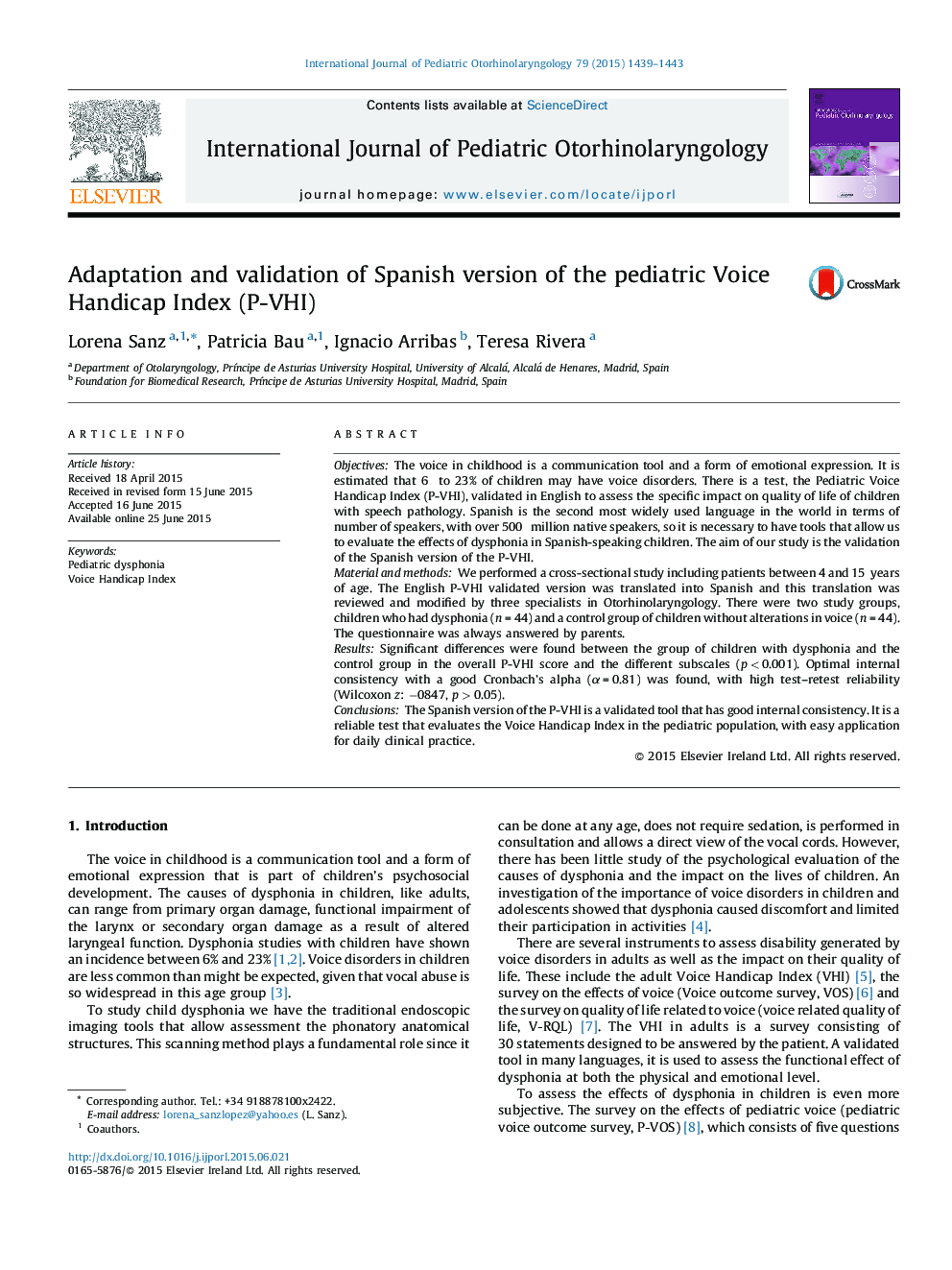| Article ID | Journal | Published Year | Pages | File Type |
|---|---|---|---|---|
| 4112087 | International Journal of Pediatric Otorhinolaryngology | 2015 | 5 Pages |
ObjectivesThe voice in childhood is a communication tool and a form of emotional expression. It is estimated that 6 to 23% of children may have voice disorders. There is a test, the Pediatric Voice Handicap Index (P-VHI), validated in English to assess the specific impact on quality of life of children with speech pathology. Spanish is the second most widely used language in the world in terms of number of speakers, with over 500 million native speakers, so it is necessary to have tools that allow us to evaluate the effects of dysphonia in Spanish-speaking children. The aim of our study is the validation of the Spanish version of the P-VHI.Material and methodsWe performed a cross-sectional study including patients between 4 and 15 years of age. The English P-VHI validated version was translated into Spanish and this translation was reviewed and modified by three specialists in Otorhinolaryngology. There were two study groups, children who had dysphonia (n = 44) and a control group of children without alterations in voice (n = 44). The questionnaire was always answered by parents.ResultsSignificant differences were found between the group of children with dysphonia and the control group in the overall P-VHI score and the different subscales (p < 0.001). Optimal internal consistency with a good Cronbach's alpha (α = 0.81) was found, with high test–retest reliability (Wilcoxon z: −0847, p > 0.05).ConclusionsThe Spanish version of the P-VHI is a validated tool that has good internal consistency. It is a reliable test that evaluates the Voice Handicap Index in the pediatric population, with easy application for daily clinical practice.
